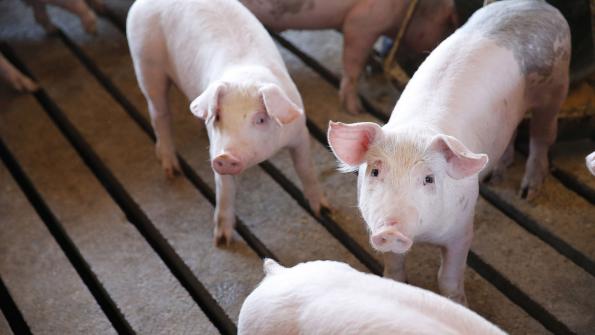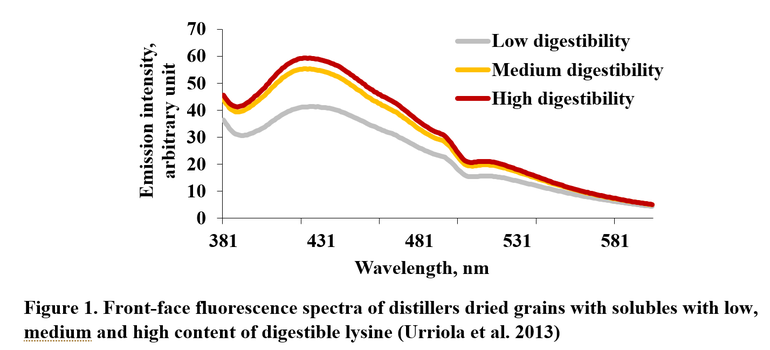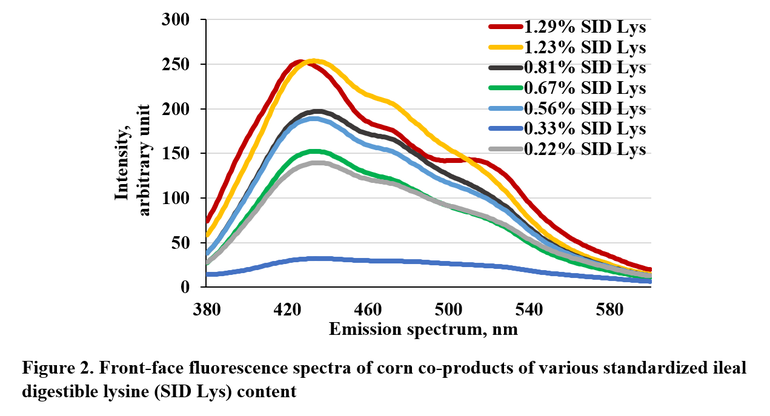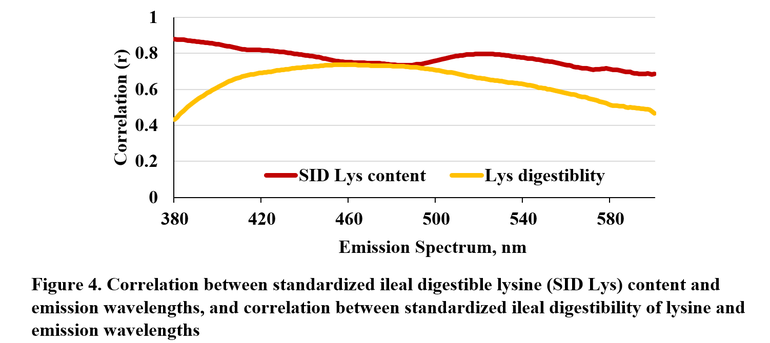Nutritionists continuously looking for rapid, affordable and reliable tools to measure digestible amino acid content.
February 11, 2021

Achieving optimum nutritional efficiency in pork production depends on the ability to accurately determine the nutrients for productive functions (i.e. growth, reproduction) in pigs. Amino acids are required nutrients that represent a significant portion of swine diets, but their digestibility varies among feed ingredients, especially those that are heat-treated, such as corn distillers dried grains with solubles (DDGS).
Because swine diets are formulated on a digestible amino acid basis, nutritionists are continuously looking for rapid, affordable, and reliable tools to measure digestible amino acid content of feed ingredients. Although the use of near-infrared spectroscopy (NIRS) has become a popular method for rapidly and accurately determining the nutrient composition of ingredients and complete feeds, its use for estimating digestible amino acid content has been challenging.
Front-face fluorescence spectroscopy (FFFS) has been used in the human food industry for many years, especially for determining protein and amino acid quality in infant formulas. Heat damage of proteins in foods and feed ingredients can lead to Maillard reactions which cause amino acids, especially lysine, to become indigestible. Although FFFS is a fast and sensitive method for quality assessment of milk and other proteins, it has not been used in the feed industry. Similar to NIRS, the FFFS is based on the principle that molecular bonds absorb and emit light at specific frequencies and wavelengths. While the NIRS uses wavelengths that are not visible (700-1400 nm), FFFS uses visible light wavelengths (300-700 nm). Compared with conventional fluorescence spectroscopy, FFFS detects light at an angle that is appropriate for non-transparent solid samples, and measurement only requires about one minute per reading with minimal sample preparation.
In previous research (Urriola et al., 2013), we showed that FFFS can be used to measure heat damage in corn DDGS and predict standardized ileal digestibility (SID) of amino acids. In that study, 34 different sources of DDGS (~27% crude protein) were used. The FFFS spectra were modified and correlated with actual SID amino acid content of each DDGS source determined by collecting digesta from the ileum of surgically cannulated pigs. Results from this study showed that FFFS spectra can clearly differentiate DDGS sources ranging in SID of lysine of 0.33%, 0.54%, and 0.77%, and the model was very predictive with an adjusted R2 of 0.96 (Figure 1).

Because of these promising results, we recently conducted another study to measure digestibility of amino acids in corn DDGS (27% crude protein) and novel high-protein (36-50% crude protein) corn co-products and relate the SID data with FFFS spectrum. The seven co-products evaluated had SID lysine content ranging from 0.22% to 1.29%. Results showed that the FFFS spectra can generally distinguish high SID lysine content from low SID lysine content between these more diverse corn co-products but not as well as for only corn DDGS sources evaluated in the Urriola et al. (2013) study (Figure 2). However, our recent study had fewer samples with much more diverse chemical composition among the types of corn co-products evaluated. More samples within each type of co-product category may be needed to establish a more accurate FFF method in future studies.

We presumed that the ability of FFFS to predict the digestible amino acid content in corn DDGS was due to the impact of heat treatment on amino acid digestibility. Therefore, we selected one DDGS source and autoclaved it at 121 ̊C for 15 minutes and 30 minutes to purposely create heat-damaged protein and amino acids. Again, we were able to observe clear differentiation in the FFFS spectrum (Figure 3), between no heat-treatment and autoclaving the same DDGS source for 15 or 30 minutes.

Furthermore, each of the data points on the FFFS emission spectrum was used to correlate with the digestible lysine content, which suggested that the spectrum data may be used to predict SID Lys content in corn co-products (Figure 4). Therefore, we believe that FFFS can be a fast, inexpensive, and useful method of quantifying heat damage in heat-processed feed ingredients such as corn-co-products.

However, to optimize this method and improve its functionality, future research will focus on 1) testing different types of heat-treated ingredients such as soybean meal and animal protein by-products, 2) developing more robust calibrations using more samples and a larger database, and 3) developing prediction equations through statistical modeling.
In conclusion, based on promising preliminary data, it appears that FFFS has the potential to be a rapid, affordable, and reliable tool to measure digestible amino acids in feed ingredients.
Reference:
Urriola, P. E., Johnston, L. J., Stein, H. H., & Shurson, G. C. (2013). Prediction of the concentration of standardized ileal digestible amino acids in distillers dried grains with solubles. Journal of animal science, 91(9), 4389-4396.
Sources: Zhaohui Yang, Gerald Shurson, Pedro Urriola, University of Minnesota, are solely responsible for the information provided, and wholly own the information. Informa Business Media and all its subsidiaries are not responsible for any of the content contained in this information asset.
You May Also Like



